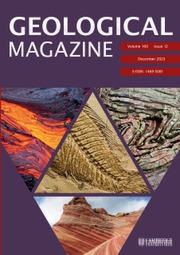Crossref Citations
This article has been cited by the following publications. This list is generated based on data provided by Crossref.
Boreham, Steve
and
Leszczynska, Karolina
2019.
The Geology of the Middle Cam Valley, Cambridgeshire, UK.
Quaternary,
Vol. 2,
Issue. 3,
p.
24.

